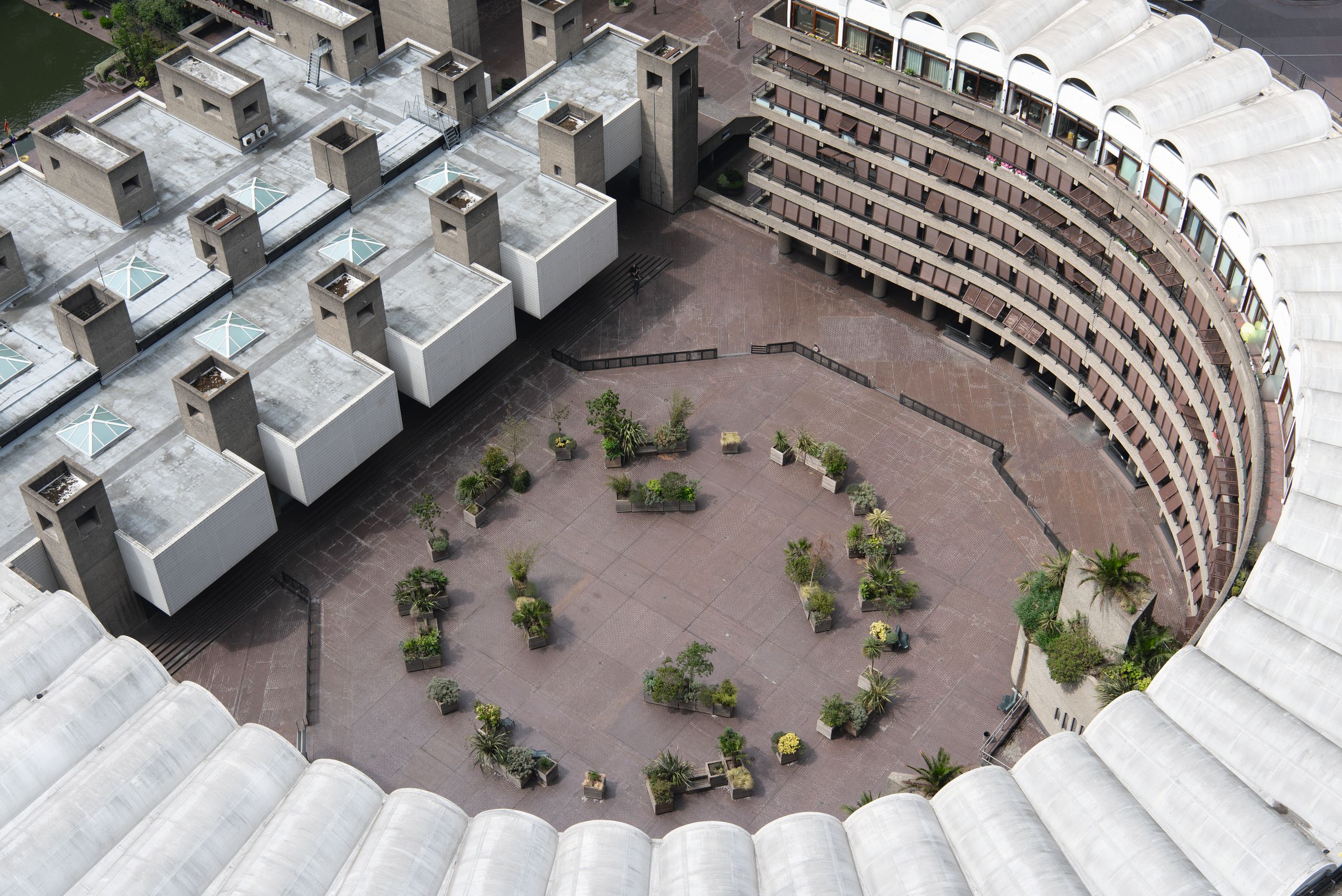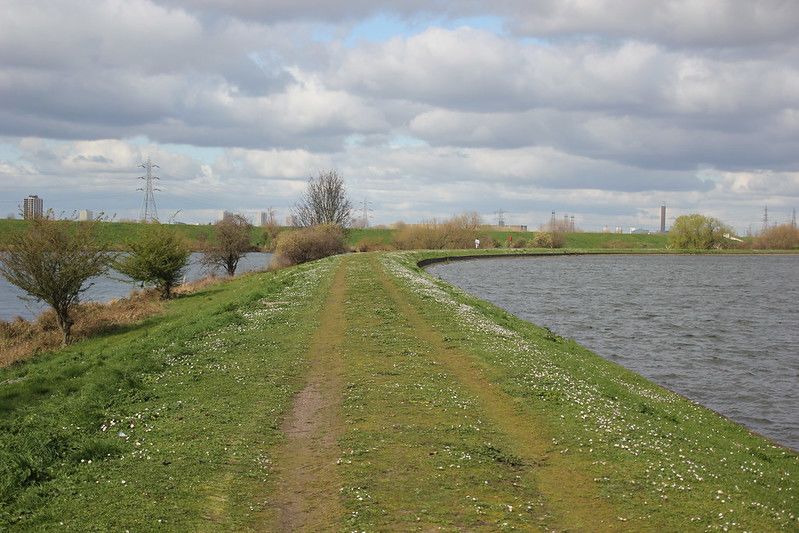Barbican Guide
July 2020

Welcome from our Managing Director
Welcome to our July Guide. We believe experiencing creativity and culture can be a valuable way to support our wellbeing and help us feel connected during these challenging times. We therefore continue exploring ways to connect you to a curated mix of digital content from our international arts and learning programme on the Read, Watch & Listen section of our website, featuring some of the amazing artists we have the privilege to work with.
This month would have marked the seventh year of Walthamstow Garden Party, our free summer festival, produced in partnership with local residents and organisations, London Borough of Waltham Forest and Create. We may be unable to bring people together in the beautiful surrounds of Lloyd Park this year, but we continue to collaborate with our extensive network of local partners. We hope you will enjoy finding out more about some of the incredible Waltham Forest organisations we work with in this edition of our Guide.
We appreciate these are difficult times for everyone, but if you’re able, please consider donating to us. Together with your help, we’ll be able to continue investing in our arts and learning programme for everyone to experience.
Thank you.
Nick Kenyon

How Brian Eno invented ambient music
Ambient is relatively rare in that it’s a genre that can be traced back to one artist – in this case, Brian Eno. Jon Dale charts the origins of a global success story.

The concept of music of moods, of environments, sound as part of quotidian experience, has its forebears, some of which we will discuss shortly. Ambient is also a surprisingly limber, pliable genre, perhaps partly due to its tendency towards the self-effacing and the anonymous. And if ambient is currently experiencing a moment of heightened awareness, that’s partly due to the way it caresses the sensorium and moves toward pleasure, offering calm and refuge from the 21st century storm, and partly due to its aforementioned malleability: we can see ambient cropping up across the musical spectrum, from the cosmic R&B of Solange and King, to the modular electronics of Caterina Barbieri and Kaitlyn Aurelia Smith, through to recent micro-movements like chillwave and vaporwave.
The story behind Eno’s discovery of ambient music is legend. Recovering from an accident, he was given a recording of harp music to listen to. Eno put the record on, settled back into his bed, and quickly realised he’d set the amplifier’s volume too low, with one channel not working at all. Too exhausted to get up and correct his mistake, he gave in to another way of listening, discovering the way music at low volume melts into, and becomes part of, the low-level scrum of the everyday environment – part of the general ambience. Building on this realisation/revelation, he would record and curate a number of landmark ambient albums, such as Ambient 1: Music For Airports and Ambient 4: On Land.
Eno was a refugee from art-rock – he was an original member of Roxy Music; but the music he was now making, sedentary and supine, intellectually rigorous, hooked him into a wider history of art – from the musique d’ameublement (furniture music) of French composer Erik Satie, through the chance operations of John Cage, the minimalism of La Monte Young and Steve Reich, experimental film’s jettisoning of narrative and its subsequent movement ‘into the field’ as expanded cinema, the graphic scores of Morton Feldman, the group sound of AMM and The Scratch Orchestra (Eno himself had been part of the latter). There’s a through-line here of experiment and chance, but also of expression as part of an environmental consciousness, understanding the architectures of everyday life.
Discover how Eno’s new genre’s influence spread worldwide in our 'An Introduction to Ambient Music' longread.
Behind the images
We’re excited to announce that our major exhibition Masculinities: Liberation through Photography will open this month (with social distancing rules).

In anticipation of that, join photographers Anna Fox and Karen Knorr as they discuss their work and the themes of the exhibition with Sabina Jaskot-Gill, Curator of Photographs at the National Portrait Gallery.
Discover how Knorr created her series Gentlemen (1981-83), which was photographed in the gentlemen’s clubs of central London and considers the patriarchal values of the English upper middle classes. Fox, meanwhile, discusses her series My Mother’s Cupboards and My Father’s Words (2000), which pairs her father’s outbursts against the women in his household with images of her mother’s neatly-kept cupboards.
This talk was organised as part of our programme of events. Although they couldn’t all be together physically, the three got together virtually, to discuss the aesthetic and social questions raised by work.
Masculinities: Liberation through Photography is due to reopen on Wednesday 13 July. Advance booking essential.
Lead Sponsor: CALVIN KLEIN
The Long Read
Walthamstow Home Party

Lockdown means our annual festival plans in E17 have had to change this year. But there’s still plenty of fun to be had – even while at home.
The seventh Walthamstow Garden Party was due to take place this month, but the coronavirus pandemic meant getting 30,000 people together for a weekend of fun in Lloyd Park just wasn’t going to be possible.
Undeterred, we’re launching Walthamstow Garden Party In The Air, a programme of free activities developed by local organisations and community groups to get people into the spirit of the festival, and be creative at home.
From Wednesday 1 July, there will be a variety of free resources and sharing ideas to help you get started. Among the free activities you can do will be decorative 'kimono' kite making with Blackhorse Workshop, DIY windchimes with Walthamstow Toy Library and Play Centre and Scribble & Smudge, and crafting birds with the William Morris Gallery. You can also get weaving with Rezia Wahid from the Waltham Forest Muslim Culture Forum and explore a range of artist workshops and family activities commissioned by Artillery. As well as so many more virtual activities, video performances and more.
We’d love you to share your creations – so post them up in your windows, on balconies and on social media, and encourage your friends and neighbours to take part too. Join the fun on #WGPInTheAir.
Then, over the weekend of 18 and 19 July, East London Radio will be broadcasting live, bringing you activities, discussions and music from our Walthamstow Garden Party friends.
If you’ve been to the festival before, you’ll remember Walthamstow’s Wild Card Brewery’s beers. Since lockdown the team has launched a home-delivery service to areas of east London. If that’s your tipple of choice, grab a brew from them and get in the festival groove.
Read on for your ‘festival guide’ to how you can join in the fun while staying at home. You can find it all, and more on the Walthamstow Garden Party website.
My Barbican Walthamstow
Born at Walthamstow’s Ravenswood Industrial Estate, Wild Card Brewery has become a national success story. Co-founder Andrew Birkby shares some of his favourite spots in their home postcode.
God's Own Junkyard
It's hard to describe what makes this place so magical. It's a cliché to say, I know, but you really have to see it to believe it. It’s full of hundreds of music and film props alongside classic neon signs from Soho. It is a feast for the senses and a lifetime of hard work by Chris Bracey and his family. Wild Card and God's Own Junkyard moved to the Ravenswood Industrial Estate at the same time in early 2014. We opened up the overgrown gate at the end of Summit Road for the first time in years. And what was a half empty industrial estate has sprung back into life since.
Wild Card Barrel Store
This is where it all started for Wild Card. And we still love the place. We're particularly proud of the diverse crowd we get. Families, hipsters, tourists, and more. The one thing that binds everyone is that it is such a friendly, welcoming crowd. Ok, so it's a car park. But it's a beautiful one and there is such a great vibe. We can't wait to reopen and be sharing pints of beer with people again.

Walthamstow Wetlands. Photo: Matthew Black (Flickr)
Walthamstow Wetlands
We count ourselves incredibly lucky that our production site and tap bar is situated next to the Lockwood Way entrance to Walthamstow Wetlands. When we clock off for lunch, it just takes a few steps and we're in an internationally significant urban wetlands. The contrast of large industrial pumps and other equipment with the natural surroundings is really striking. The place is teeming with wildlife, the views are spectacular and you can very easily forget you're in London.

God's Own Junkyard. Photo: Matt Brown (Flickr)
God's Own Junkyard. Photo: Matt Brown (Flickr)

Walthamstow Wetlands. Photo: Matthew Black (Flickr)
Walthamstow Wetlands. Photo: Matthew Black (Flickr)
New perspectives
Warm sunlight on the balconies of these flats caught the eye of one of our Instagrammers in Residence, Justine Szymańska @jocelyne._ They say, ‘This photo takes me back to the endless exploration of Barbican, where I could spend the whole day and still find new corners. It was taken when I got lost and while looking for an exit I noticed the beautiful setting sun illuminating the building and it just did not let me pass by without one more shot.’
Support the Barbican
We rely on ticket sales and your enduring support and generosity to be able to present and share our programme with you and thousands of others. We’re all finding ourselves in completely new territory, which presents a real financial challenge for us and for those we work with. So, if you’re able, please consider donating to us so we can keep investing in the artists and organisations that help make this place what it is. Please also consider donating to our artistic residents and associates to support them through these difficult times.
What's On
We're starting to reopen following government guidance, and can't wait to welcome you back. Your safety is of the utmost importance, so not all types of events are taking place, but you can see what's coming up later in the year on our website.

With thanks
The City of London Corporation, founder and principal funder
Centre Partner
Christie Digital
Major Supporters
Arts Council England; Esmeé Fairbairn Foundation; Sir Siegmund Warburg’s Voluntary Settlement; The National Lottery Heritage Fund; Terra Foundation for American Art; UBS; Wellcome
Corporate Supporters
Aberdeen Standard Investments; Allford Hall Monaghan Morris; Audible; Bank of America; Bloomberg; Calvin Klein; CMS; DLA Piper; Howden M&A Limited; Leigh Day; Linklaters LLP; National Australia Bank; Natrium Capital Limited; Newgate Communications; Pinsent Masons; Reed Smith; Slaughter and May; Sotheby's; Taittinger Champagne; UBS
Trusts & Grantmakers
Jonathan Ruffer Curatorial Research Grant from the Art Fund; Embassy of the Kingdom of the Netherlands
We also want to thank Barbican Patrons, donors to Name a Seat, Members, and everyone who has supported the Barbican by making a donation.
To find out more, visit barbican.org.uk/supportus or email [email protected]
The Barbican Centre Trust, registered charity no. 294282